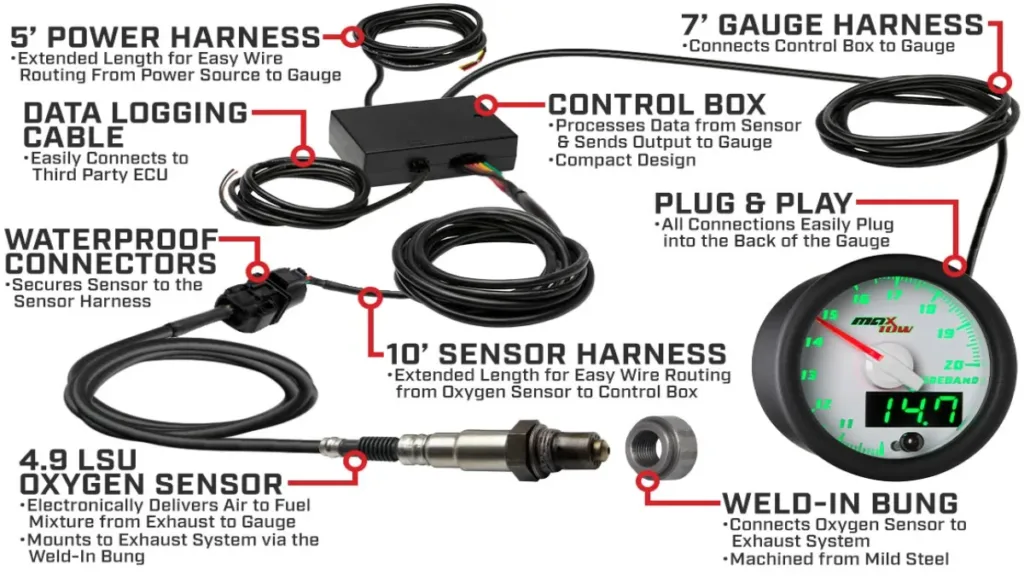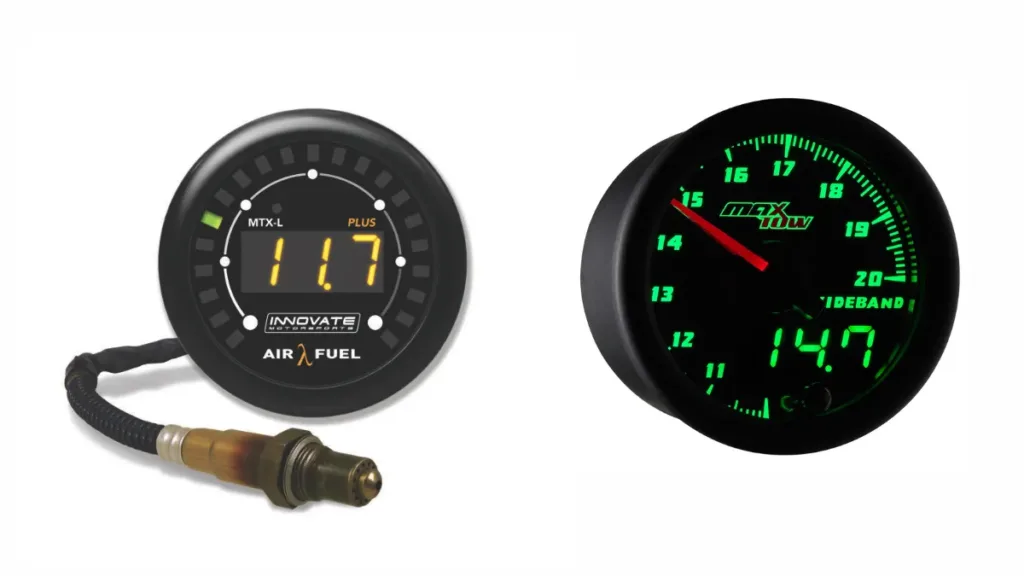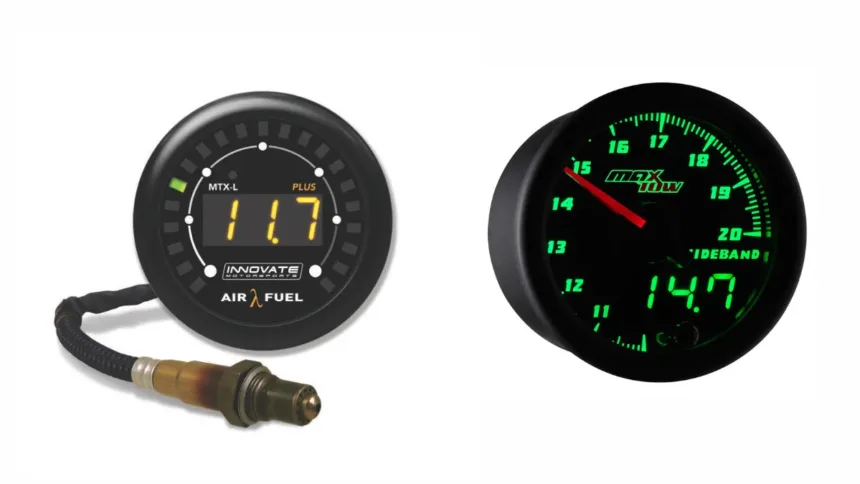Introduction to the Air Fuel Ratio Gauge
If you are a car enthusiast, particularly with an interest in tuning or performance cars, you might have heard of the air fuel ratio gauge. This small little tool is a very important component to make sure your engine is running at an optimum level. It gives you crucial real time information relating to what mixture of air and fuel lives inside your combustion engine. The right balance between air and fuel can mean the difference between efficiency, performance, and longevity from your engine.
How Does the Air Fuel Ratio Gauge Work?
At its most basic, it is an air-fuel ratio gauge, which would measure your engine’s air-fuel ratio. All engines must be built upon the fact that they require just the right mix of air and fuel to combust properly. You have a lean condition where there is too much air and not enough fuel, allowing for overheating and other damage. At the fuel-rich condition, or on the other extreme where there is much fuel and little air, results in a “rich” condition with fuel wasted and certainly not optimum performance.
The oxygen sensor sits in the exhaust system, and that is what is put to work for the gauge. It measures and transmits information back to the gauge regarding the presence of oxygen as data is transmitted back in order to give a real-time reading of your engine’s air-fuel ratio. This air fuel ratio gauge incorporates the more advanced features by giving alarm alerts. These will alert the driver in case the engine is operating beyond the air-fuel desirable range. It will therefore, prevent the occurrence of long-term damage before it reaches serious stages.
Types of Air Fuel Ratio Gauges

There are two main types of AFR gauges:
- Narrowband AFR Gauges: These are the more basic option, giving a less precise reading. They generally work well for stock engines but aren’t great for performance tuning. Narrowband gauges measure a smaller range of air-fuel ratios, which can make it harder to detect fine variations in the engine’s performance.
- Wideband AFR Gauges: If you’re serious about getting the most out of your vehicle, wideband gauges offer more precise readings and are highly recommended for performance applications, especially when tuning. Wideband gauges can monitor a broader range of air-fuel ratios, providing detailed feedback that’s essential for high-performance tuning.
AFR gauges come in both analog and digital options. Analog gauges are more traditional and basic, in that they give a dial with simple information, whereas digital ones are a more contemporary format in that they give much more detail. Some even allow data logging so that the air-fuel ratio can actually be recorded over time and performance more effectively analyzed under different conditions of driving.
Why You Need an Air Fuel Ratio Gauge
Why is an AFR gauge so important? Well, if you’re serious about taking care of your engine, this tool gives you critical information. Monitoring your air-fuel ratio helps ensure:
- Engine Efficiency: An ideal air-fuel mixture can boost fuel efficiency and save you money in the long run. Running too rich wastes fuel, while running too lean can damage components such as the exhaust manifold and catalytic converter.
- Prevent Engine Damage: Running lean for too long can cause severe damage to your engine, while a rich mixture can harm your catalytic converter and increase emissions. Regular monitoring helps avoid these costly repairs.
- Optimal Performance: Whether you’re tuning your car for racing or just trying to maintain peak performance, knowing your AFR is key. It helps you optimize your engine’s output by adjusting fuel delivery and combustion to achieve maximum power.
For modified or high-performance engines, an AFR gauge is an indispensable tool, helping to maintain the delicate balance between fuel delivery, air intake, and combustion.
How to Read an Air Fuel Ratio Gauge

The ideal air-fuel ratio (AFR) for most gasoline engines is around 14.7:1. This is known as the stoichiometric ratio—basically, the “perfect” balance of air to fuel for complete combustion.
- Lean (higher than 14.7:1): Indicates too much air and not enough fuel. Your engine could run hot, risking damage. Lean conditions can also cause poor throttle response and erratic idle.
- Rich (lower than 14.7:1): Too much fuel, which could lower your fuel efficiency and clog components like your spark plugs. A rich condition might also result in black smoke coming from the exhaust.
Depending on driving conditions and vehicle setup, these numbers can vary, so it’s crucial to monitor them regularly. For example, turbocharged engines often run a richer air-fuel mixture (around 12.5:1) to avoid knocking under high load.
Installing an Air Fuel Ratio Gauge
Installing an AFR gauge might seem like a daunting task, but with the right tools, it’s relatively simple. Here’s a quick step-by-step guide:
- Gather Your Tools: You’ll need a basic set of hand tools, wire connectors, and an oxygen sensor.
- Locate the Oxygen Sensor: Typically, this is found in the exhaust system near the engine. In some cases, you may need to install a dedicated wideband sensor, especially if upgrading from a narrowband setup.
- Install the Gauge: Secure the gauge in your dashboard and connect it to the oxygen sensor.
- Power Up: Wire the gauge to your car’s electrical system, and you’re ready to go.
Pro Tip: Make sure to follow the manufacturer’s installation guide for your specific model, as the wiring and placement may vary. It’s also a good idea to use heat-resistant wiring to ensure long-lasting performance in the high-temperature environment near the exhaust system.
Common Issues with Air Fuel Ratio Gauges
Sometimes, you’ll run into issues such as problematic readings or faulty sensors. It usually stems from dirty or clogged sensors. Regular cleaning and calibration of the sensor do the trick. If your gauge reads erratically, it is mostly due to poor wiring connections or an old oxygen sensor that has to be replaced.
Also, exhaust fumes and soot have impacts to the work of sensors and block the proper work of sensors. Some sensors may also need a replacement after a certain mileage some vehicles are sold at high performance levels.
Upgrading to a Wideband Air Fuel Ratio Gauge
They are much more accurate, which is somewhat advantageous for fine-tuning performance engines. Wideband gauges represent a wider window of air-fuel ratios than do their narrowband counterparts, so they are more useful in repping the kind of engines that use forced induction systems-the types of systems found with turbochargers and superchargers.
Air Fuel Ratio and Performance Tuning
The AFR gauge is also an extremely important tool in fine-tuning any vehicle. Especially on turbocharged and supercharged engines, wideband gauges allow for real-time feedback to dial in that perfect air-fuel mix for the ultimate horsepower and torque. In performance tuning, the AFR is adjusted-not running too lean-that nasty knocking at high load or even worse, a potential engine failure.
Air Fuel Ratio and Fuel Economy
Amazing how keeping an eye on air-fuel ratio actually makes your car more fuel-efficient. Not running too rich, avoiding the tailpipe of waste dollar events, fewer trips to the corner convenience store You will likely want to run an AFR a bit on the lean side-as opposed to being radical to maximize efficiency gains if that is in any way, shape, or form your goal, to extract a little better fuel economy from daily driving situations.
Using an AFR Gauge in Racing and Motorsports
It’s little things that make big differences in racing. This gauge puts you on top of your engine’s efficiency-to be fast, but also to be safe-that’s important when racing with cars that take extreme conditions. Running an AFR too rich will slow you down in motorsports, but running too lean certainly increases the risks for catastrophic engine failure, particularly at high RPMs.
Common Myths About Air Fuel Ratio Gauges
Contrary to one’s expectations, AFR gauges aren’t only for race cars or high-performance vehicles. In fact, your average daily driver can benefit from knowing the air/fuel ratio-if it’s efficiency is being questioned, and avoiding damage-prone repairs. The other myth that surrounds wideband gauges is that they’re too complicated for the average user. Once installed, however, it’s very user-friendly, providing real-time feedback with which damage and worsening of performance can be prevented.
Choosing the Right Air Fuel Ratio Gauge for Your Vehicle
When picking an AFR gauge, consider factors like:
- Accuracy: Wideband gauges offer more precise readings.
- Ease of Installation: Some models are simpler to install than others.
- Display Style: Do you prefer an analog or digital readout?
There are some excellent gauges available from well-known manufacturers like AEM, Innovate Motorsports, and AutoMeter. Ensure that the gauge selected will work with other existing systems on your vehicle and provides the accuracy you need to ensure your application meets specifications.
Conclusion
In short, this is a very useful gadget to any owner of a vehicle, whether you are concerned about performance, efficiency, or just not damaging your engine. Keeping a close eye on your air-fuel ratio, you are sure to have your car running like a dream both on safety and economy in the fuel consumption. Whether in tuning for racing or optimization of fuel economy, you simply cannot do without having an AFR gauge.
FAQs
- What is the ideal air-fuel ratio?
The ideal AFR for most gasoline engines is 14.7:1, also known as the stoichiometric ratio. - How often should I check my AFR gauge?
Regularly, especially if you notice performance issues or if you’re tuning your vehicle. - Can I install an AFR gauge myself?
Yes, with the right tools and instructions, most DIY enthusiasts can handle it. - Does an AFR gauge affect fuel economy?
Yes, it helps monitor fuel efficiency by ensuring the engine runs at the optimal air-fuel ratio. - Is a wideband gauge better than a narrowband gauge?
For precision and tuning, a wideband gauge is superior because it provides more detailed and accurate readings.
Also Read : All Wheel Drive Tire Rotation: A Comprehensive Guide







